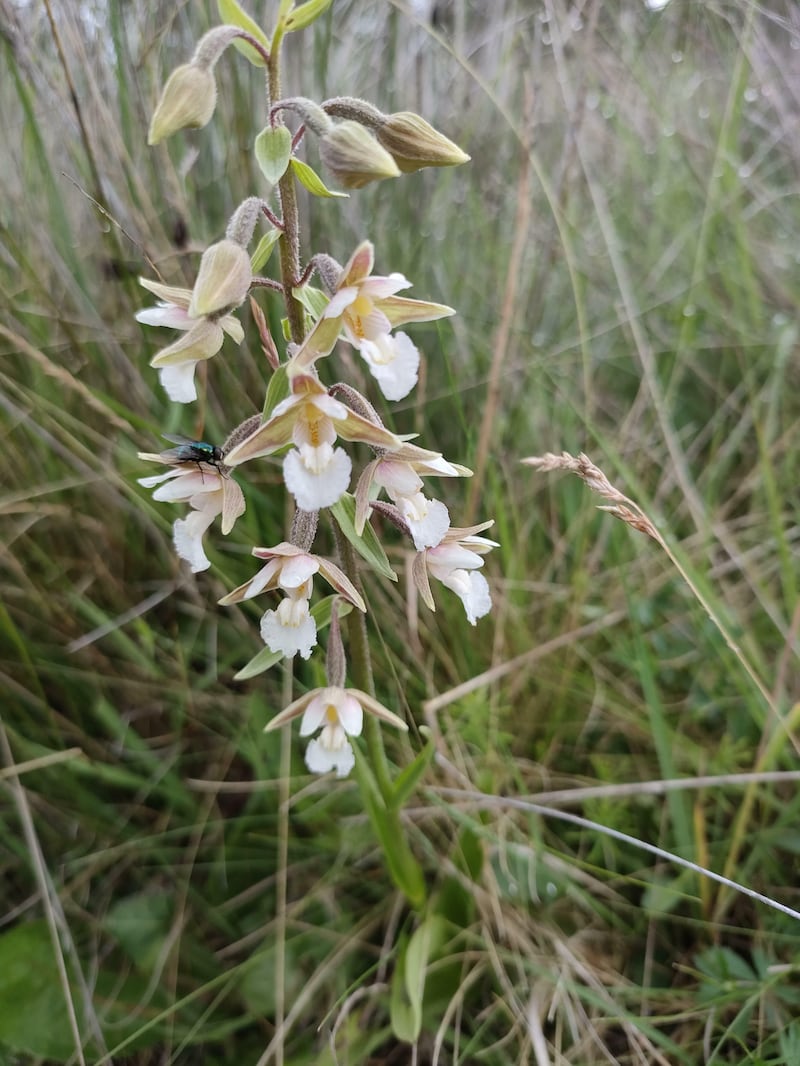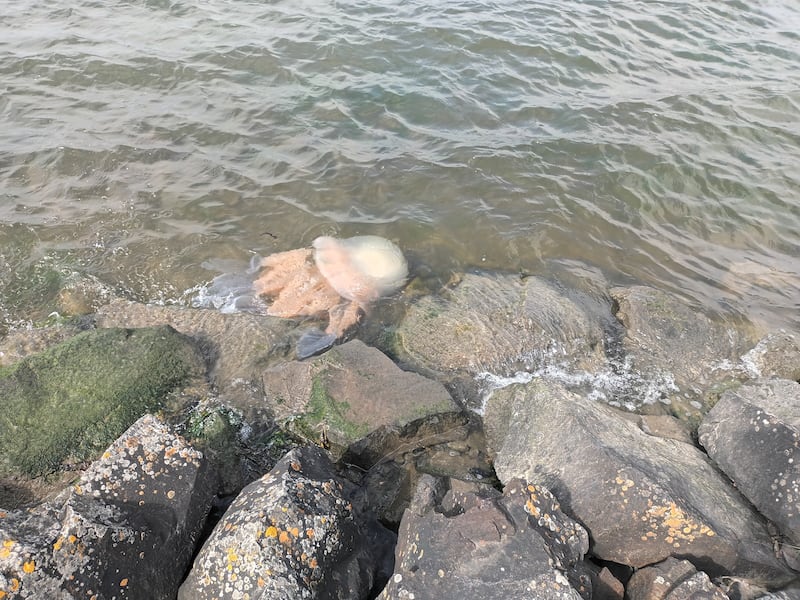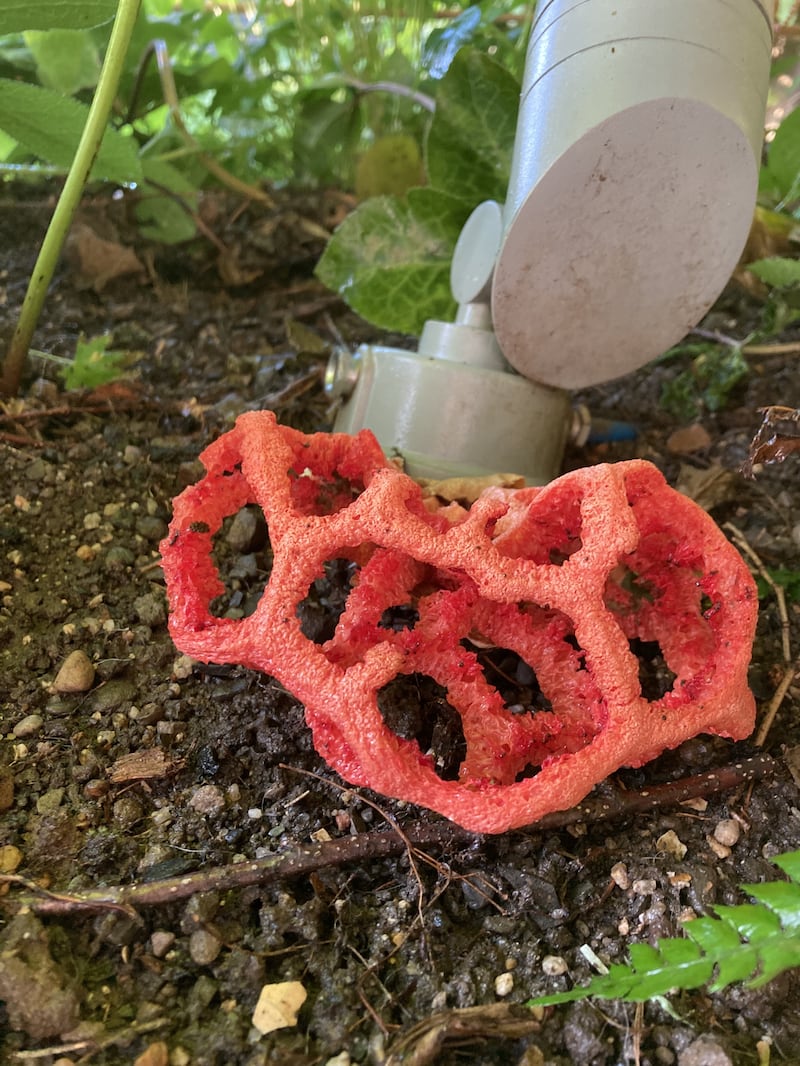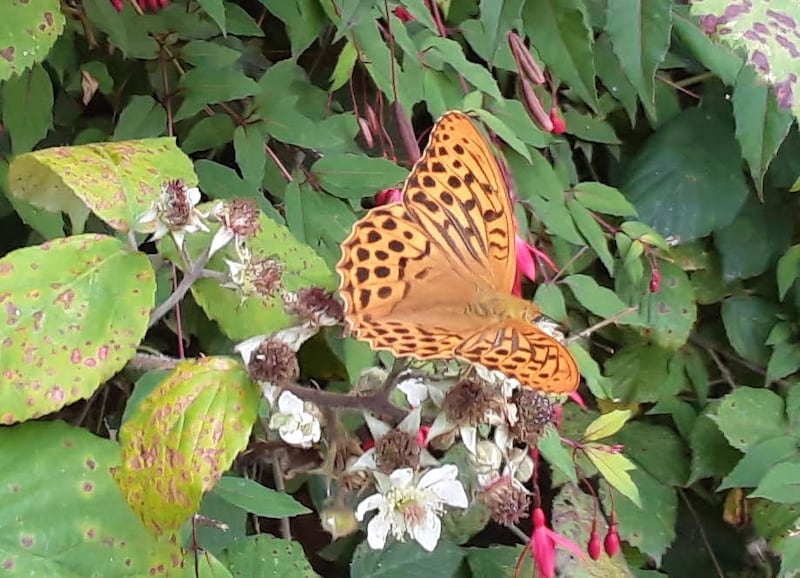Here between Clones and Scotshouse in Co Monaghan, we have been watching a woodpecker each summer since 2018. Earlier this year we saw a pair together for the first time, and in June we watched the mother feeding a chick, often on our garden fence — never the father, who seems to be gone now. There are two chicks in all, visiting our feeders and fending for themselves by this stage. — Fintan McPhillips, Co Monaghan
First recorded here in 2005, the great spotted woodpecker has continued its dramatic range expansion and now occurs in all counties. Records submitted to the National Biodiversity Data Centre show it is extremely widespread in Leinster, has colonised much of the Border counties and continues to extend its range westward, though it is still relatively scarce west of the Shannon.

I found this moth on my car. It had just flown out of my box hedge and seemed to be the box tree moth, whose caterpillars feed on the leaves of box. — Eric Byrne, Terenure
It is indeed the box tree moth. It is native to China but was discovered in mainland Europe in 2007 and here in 2017, probably transported on infected boxwood plants. The caterpillars feed on the leaves as well as the bark, which leads to the plant being killed. So, if it has laid eggs, it is probably curtains for your box hedge. Replace it with a native species one.

Several of these are growing in rough land near where I live and I can’t really identify them. Not sure if they are helleborines or orchids. — Jerry Castle, Co Tipperary
They are marsh helleborines, Epipactis palustris. These are classified as orchids — in fact, we have 13 different genera of wild orchids in Ireland. This one grows on wet dune slacks and in calcareous marshes and fens inland and there are records for most Irish counties.

Came across this big fellow on Malahide estuary. Decided against a swim. — Brian McCarthy, Co Dublin
Yes indeed, discretion is the better part of valour. It is a barrel jellyfish, which — while it can sting if you get up close to it — actually has quite short tentacles. The lion’s mane and Portuguese man o’ war are much worse, and beaches are closed for safety when they turn up in numbers. Which indeed And this is happening more and more as we overfish and remove their fishy predators. Beaches full of large jellyfish are a direct result of reducing biodiversity in the sea.

I recently found this strange-looking mushroom in my garden, growing out from under a light fitting. It has a pretty awful smell too! — Aileen Ryan, Co Dublin
Hey, it’s not called the red latticed stinkhorn for nothing. Mycologist Hubert Fuller tells me that this species, Clathrus ruber, arises from a white spherical “witch’s egg”. The slimy and very foul-smelling spore mass is located on the inside of the lattice. It occurs on soil and wood chips in warm sites. It is rarely seen in Ireland but was originally recorded in a garden in Clontarf.

We saw this beautiful butterfly on brambles and St John’s wort in the garden of Dinis Cottage in Killarney recently. What is its name and is it rare here? — Angela Treacy, New Ross
It is a silver-washed fritillary. It is our largest butterfly and lives in deciduous and mixed woodland areas where direct sunlight reaches the floor. While this male was having a sup of nectar from the bramble flower to keep up his strength for mating, the common dog violet is the host plant for the caterpillars. It is recorded in every county.
- Please submit your nature query, observation, or photo with a location, via irishtimes.com/eyeonnature















